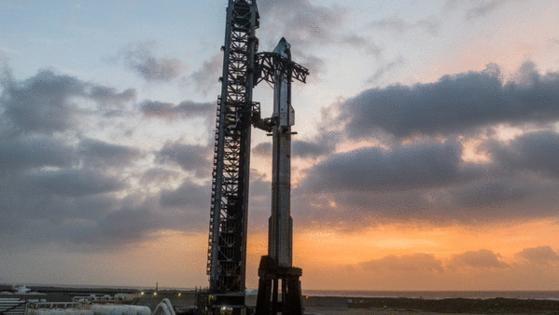ULA's retired Delta IV launch tower demolished as SpaceX eyes Cape Canaveral site for Starship
Published in Science & Technology News
With SpaceX champing at the bit to begin construction of a new Starship launch site at Cape Canaveral Space Force Station, demolition began Thursday to remove structures used by the previous tenant, United Launch Alliance.
ULA used Space Launch Complex 37 for its Delta IV class of rockets, but the last Delta IV Heavy mission flew in April 2024 and ULA gave up its lease on the site.
A video posted to X by journalist Michael Seeley shows the moment the Mobile Service Tower emblazoned with ULA’s logo toppled over after a fiery explosion that also took out two lightning towers and a fixed umbilical tower. The site was previously used for eight Saturn 1 and 1B launches in the 1960s in support of the Apollo program.
It then became home for what was initially Boeing Delta IV rockets starting in 2002. Boeing teamed up with Lockheed Martin to form ULA in 2006.
Unlike other launch sites across Cape Canaveral and nearby Kennedy Space Center that feature rockets rolled out to their pads, Delta IV rockets were stood up within the protective Mobile Service Tower that would roll away from the pad ahead of launch. From 2002-2024, SLC-37 hosted 35 Delta IV rocket launches.
That infrastructure turned to rubble, though, under the demolition work overseen by SpaceX and Space Force.
SpaceX now awaits final results of an Environmental Impact Statement run by the Department of the Air Force expected to be published this fall.
The EIS could clear the path for SpaceX to complete its own launch infrastructure for one of two planned Space Coast sites for its in-development Starship and Super Heavy rocket. The other would be at KSC’s Launch Complex 39-A, where SpaceX already has a pad for Falcon 9 and Falcon Heavy launches. The Federal Aviation Administration is running its own EIS for the KSC Starship site.
Together, the two Starship pads could support as many as 120 launches per year, with up to twice as many landings. The Super Heavy booster returns to the tower minutes after launch to be captured by swiveling arms known as “chopsticks” while the upper stage is designed to make a vertical landing at the end of its orbital missions.
For now, SpaceX has only performed suborbital test flights of the massive rocket from its Texas site, Starbase, but the company has stated it would like to have its first operational flight from the Space Coast by the end of 2025. SpaceX also continues to fly Falcon 9 rockets from Space Launch Complex 40.
ULA meanwhile has refocused its attention to its other Space Coast launch site set up for its Atlas V and new Vulcan rockets at Space Launch Complex 41.
_____
©2025 Orlando Sentinel. Visit orlandosentinel.com. Distributed by Tribune Content Agency, LLC.







Comments